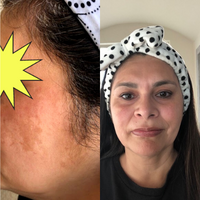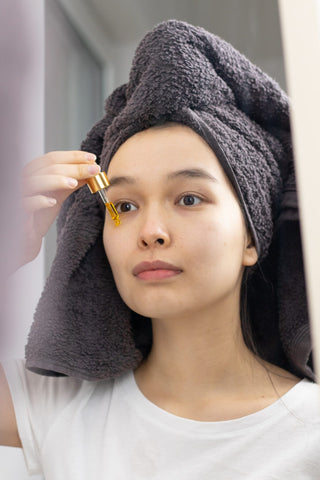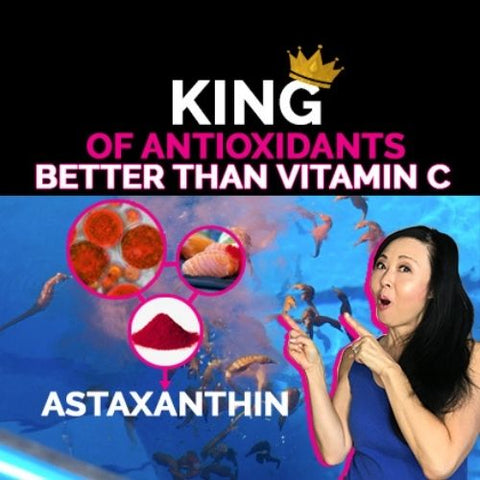The best treatment options for Melasma on the face greatly depends on the individual’s skin type and where they fall on the Fitzpatrick Scale.
Do you have large, uneven brown patches on your face that seem to be getting darker, larger, or BOTH?
Have you spent money on products that you hoped would get rid of that annoying dark spot(s) on your face?
Have you watched video-after-video, jumped from one product to the next, hoping for the cure-all, fade-all formula?
Although Melasma is one of the most common skin conditions throughout the world, it is also the most difficult to treat, and to top it all off, there is no one-size-fits-all formulation or protocol that effectively works for everyone.
If you haven’t seen our last video on the 3 Myths of Melasma Can You Cure Melasma?, make sure to watch it.
If you have larger, more stubborn areas of Melasma and you are NOT:
-Pregnant
-Planning to become pregnant
-Affected by any other contraindications
If your budget allows for it, consider professional treatments because they are the fastest and most effective way to deal with Melasma.
Over-the-counter (OTC) products alone cannot fade hyperpigmentation effectively.
Melasma Treatment Option: Laser Treatment for Melasma
If you watched our other hyperpigmentation videos, you will know heat can make Melasma worse.
The first rule of Melasma treatment is to NOT use heat, so traditional laser procedures are a contraindication. Traditional lasers will likely make the Melasma even darker, especially if you are a Fitzpatrick 4, 5, or 6 skin type. So if you think that the best treatment option for Melasma is laser, please read on.
Hyperpigmentation and Understanding how it affects our Skin Type
These skin types are already at risk for hyperpigmentation from traditional laser treatments.
So please be careful if you have darker skin and you are considering laser treatments.
Some professionals will suggest a skin-cooling process after the laser procedure to help decrease the pain and post-inflammation.
They also suggest that it can allow for the use of higher laser frequencies which may reduce hyperpigmentation post-laser treatment.
However, according to an article that was published in the September issue of the Journal of Archives of Dermatology, cooling of the skin post-laser treatment is three times more likely to develop hyperpigmentation than uncooled skin.
Most cases developed 2 weeks after the treatment.
This study was done on 23 Thai women with the average age being 43 years old.
Always speak with a professional before committing to the service. I recommend speaking with at least three different laser professionals BEFORE making a decision.
Ask them what type of post-care they have.
Post-treatment not only ensures that the Melasma doesn’t return darker, but also extends the results of the treatment.
They both go hand-in-hand.
Best Treatment Option for Melasma: Chemical Peels
The best treatment option for Melasma may be chemical peels.
Chemical peels should be used by licensed professionals ONLY. Please ONLY go to an experienced licensed professional in your area.
Over the years, I have seen people who purchased products online, base on YouTube or Instagram posts, who used the wrong type of peel, used it in the incorrect way, and ended up with very bad results.
For example, they did not know to prepare their skin for the very low pH with a pre-treatment, about 5-7 days before the peel. They did not know that for best results, to incorporate a post-treatment protocol to reduce inflammation and keep the skin hydrated.
They simply applied the acid peel on their skin.
One of my clients who has porcelain skin and red hair did this and ended up contacting me to help her. She was embarrassed but she had acid burns on her skin and did not know what to do.
Acid peel treatments are a process and for most people, jumping to a very aggressive peel is not necessary.
Melasma is located in the lower levels of the skin so a series of peels is needed.
Peels need to be well-monitored during the process to be well-managed so that adjustments can be made if the peel is too strong, or the peel is not quite strong enough.
Melasma was not developed overnight so it cannot disappear overnight.
Typically, some of the more common peels may use:
-Kojic Acid
-Azelaic Acid
-Hydroquinone
-Jessners Peels
-Glycolic Acid (high strength 60-70%)
For Fitzpatrick Types 4-6:
These skin types are more prone to post-inflammatory hyperpigmentation, so it is recommended to start with lighter peels to see how their skin responds, then slowly proceeding with deeper peels to avoid hyperpigmentation.
Do Acid peels work?4 Tips You NEED to Know BEFORE Getting an Acid Peel!
Best Melasma Treatment Option: Skin Lightening and Brightening Products
Regardless of whether you think the best Melasma treatment option is laser, chemical peels, microdermabrasion, or a combination of different treatments for Melasma, skin lightening-and-brightening products help boost the efficacy as well as the result of professional treatments. The products also help manage and keep hyperpigmentation from returning and new ones from forming.
One of the more common ingredients used in skin lightening cream is Hydroquinone. This is a skin-bleaching agent.
When Hydroquinone is used at a prescription strength of at least 4% and in combination with Tretinoin and a Corticosteroid, studies have shown they improve Melasma.
The use of Hydroquinone is recommended to be used no longer than 4 months at a time.
On the flip side, some countries have banned the use of Hydroquinone, such as Japan, European countries, and Australia because it is believed to be linked cancer and could be a carcinogen when used for extended periods of time.
There have also been reports of abnormal function in the adrenal glands as higher levels of mercury have been found in people who have used Hydroquinone.
This is not recommended for dark-skinned individuals.
After 4 months of use, if you choose to use it, switch to other alternative skin-lightning products such as:
-Kojic Acid
-Azelaic Acid
-Vitamin C (including derivatives) – inhibits oxidation and Tyrosinase synthesis activity
-Licorice root Extract
-Niacinimide
Kojic Acid- Tyrosinase inhibitor
-Can be used as an alternative to those sensitive to Hydroquinone
-Over use can lead to Contact Dermatitis
Azelaic Acid- naturally occurring
-Non toxic Fatty Acid
-Used to treat Acne/Post-Inflammatory Hyperpigmentation/Hyperpigmentation
-One study showed similar results of using 4% Hydroquinone without the side effects.
Licorice Root Extract –
-Anti-oxidant
-Prevents oxidation
-Inhibits Tyrosinase synthesis
Niacinimide- Vitamin B3-
-NOT ONLY an anti-oxidant but it is also an anti-inflammatory (inflammation increases hyperpigmentation)
-Reduces pigmentation from post-inflammatory hyperpigmentation
-Prevents Melanosomes to the Keratinocytes
6 Anti Aging Benefits of Niacinimide
Stay tuned for an upcoming post where we discuss Hyperpigmentaion Treatments for Asian skin, Black skin, and darker skin types.
***If you have fair skin but you have a blood related relative who has darker skin, this may also include you as well!
Remember, make-up is an ART and skin care is a Science!
Follow us @:
YouTube Channel:https://www.youtube.com/channel/UC4XGWX6eheTisHo8UBsdOWA
Instagram:@GoSeeChristy
Facebook:https://www.facebook.com/goseeChristyBeautyBoutique/
Twitter:https://twitter.com/goseechristy
Pinterest:https://www.pinterest.com/goseechristy/
Sources:
https://www.ncbi.nlm.nih.gov/pubmed/1816137?dopt=Abstract
https://www.ncbi.nlm.nih.gov/pmc/articles/PMC5418955/
https://www.ncbi.nlm.nih.gov/pmc/articles/PMC5843359/




